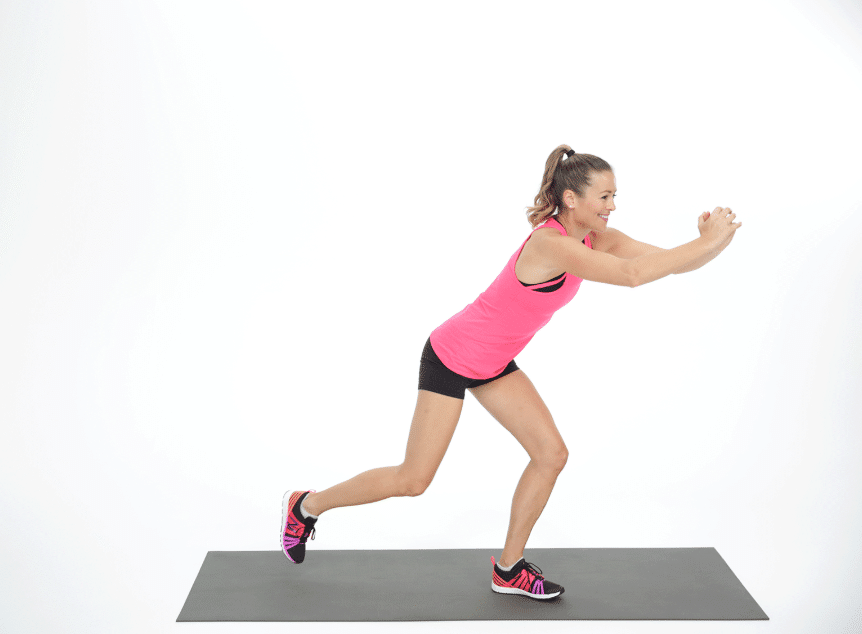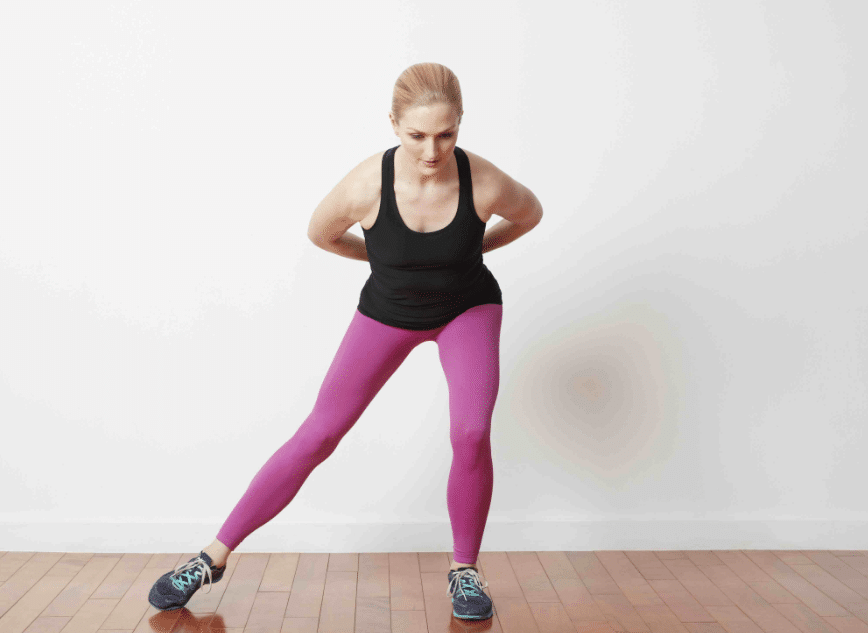Cardio Fitness Blender: Sweet, sweet low impact cardio workouts—they don’t get enough love. Look, it may be a hard run or a set of explosive plyometric exercises is just what you need to push yourself physically; high intensity, high-impact workouts that get your heart pumping definitely have their place. But maybe not. In fact, you may actually need to give your body a break and turn the impact down a notch.
That’s especially true if you’re injured, have joint or mobility problems, or have been training non-stop. “Impact certainly isn’t a bad word, but too much impact too frequently can make our joints angry,” certified personal trainer Rob Sulaver of Bandana Training tells SELF. “Low-impact cardio helps minimize the wear and tear.” If you need a low-impact exercise regimen, look no further. We’ve taken the guesswork out of things by creating a 20-minute low-impact cardio circuit that’s great for everyone — bad knees, bad hips, tired body, and all.

Below are six exercises you should do for 1 minute each, jumping right into the next when the minute is up. After you complete all six exercises back-to-back, rest for 1 minute, and then start the circuit again. Repeat three times through for a butt-kicking low-impact cardio workout. But taking it easy on your joints doesn’t mean you need to skip out on cardio completely—just focus on low-impact activities, says Sulaver.
Read Also: How Long Does Ruptured Ovarian Cyst Pain Last
To keep stress off your knees and ankles, for example, choose activities for which at least one foot remains in contact with the ground (or equipment) at all times. Walking, biking and elliptical training are all good examples of low impact cardio, compared with higher-impact running and jumping.
Low Impact Cardio Fitness Blender
Swimming
Of all the activities on this list, swimming causes the least impact on the body, Dicharry says. For runners coping with injuries such as stress fractures, knee issues, or arthritis, working out in the pool—whether you’re swimming laps or aqua jogging—is often a safer option for cross-training than using the bike or elliptical, which put more strain on the lower body.
Elliptical
Runners tend to gravitate to the elliptical because it mimics the motion of running the most, but Dicharry points out that because your feet don’t leave the machine’s pedals, it doesn’t cause the same biomechanical stress that running does, meaning you aren’t gaining the elastic strength you need for running. Still, he notes that the exercise does build some muscle memory in the quads, hamstrings, calves, and arms that can translate out on the road.
Strength Training
We already have a list of 19 reasons to strength train, and here’s one more: Most strength training exercises are low-impact, and they still work up a sweat. Keep in mind that monster box jumps while wearing a weighted vest don’t exactly qualify.
A regular routine of aerobic exercise can help alleviate neck or back pain by:
- Reducing the likelihood and/or severity of potential future painful flare-ups
Keeping the spine functional and mobile, limiting disability caused by chronic pain. Not exercising with chronic back pain will typically worsen mobility and functionality. - Burning calories to help achieve and maintain optimal weight, which can remove excess pressure on the spine
- Increasing production of endorphins, which act as a natural painkiller and can elevate mood to relieve symptoms of depression
Low Impact Cardio For Bad Knees
Partial Squats
Works: Knees, quads
- Although full squats aren’t recommended for those with tender knees, partial squats are a great exercise to build strength while protecting the joints.
- Start by positioning your feet shoulder-width apart, toes pointed forward.
- Flex your abs while lowering your upper body as low as is comfortable. Your knees should remain behind your toes throughout the exercise.
Scissor Kick
Works: Abs, hip flexors, thighs
- Lie flat on your back with your legs together and arms by your side.
- With your forearms on the ground, lift your legs six inches and your shoulders one inch.
- Holding that position, spread your legs apart, bring them back toward each other, then cross one leg over the other.
Low Impact Cardio Workout At Home
Step Touches
How to: Warm up for one minute with light cardio, such as step touches. Step out to the side with the left foot, taking the arms up, and then step the right foot in next to the left. Repeat the move to the right, moving quickly and swinging the arms to get the heart rate up. You can also take the arms overhead for more intensity.
Windmills
How to: Take it to the next level by standing in a wide stance with the arms straight out. Bend at the waist, abs in, and take the left arm towards the right foot. Stand up and repeat the move on the left, going as fast as you can. Bend the knees if you feel any back pain. Repeat for one minute.

Front Kick With Lunge
How to: Bring the right knee up and extend the leg in a snapping front kick then take the same leg back into a straight-leg lunge while touching the floor. Repeat the kick and low lunge sequence for one minute and repeat the sequence on the other side for one minute.
What Is The Best Low Impact Cardio Workout?
Walking, biking and elliptical training are all good examples of low impact cardio, compared with higher-impact running and jumping. Low-impact doesn’t necessarily mean low-intensity, though, Sulaver adds. Here are some great workouts that will rev your heart rate while still showing your problem spots some TLC.
What Is Low Impact Cardio?
Low impact workouts are the ones that require you to leave at least one foot off the ground. Examples include cycling, cardio on the elliptical machine, hiking, yoga, Pilates, and dancing.
Is Low Impact Cardio Good For Weight Loss?
Ultimately, weight loss comes down to eating less and moving more. High-intensity cardio is effective for fat-loss because you burn more calories per minute while doing it– when compared to low-intensity cardio, as well as during the time it takes your body to recover from the strenuous workout.
Is Low Impact Cardio Effective?
Low-impact, slower-paced exercise burns proportionally more fat than carbohydrate as a fuel source. But the trade-off is that you also burn fewer overall calories per unit time you exercise. Low-impact exercise is still a very effective way to lose body fat.